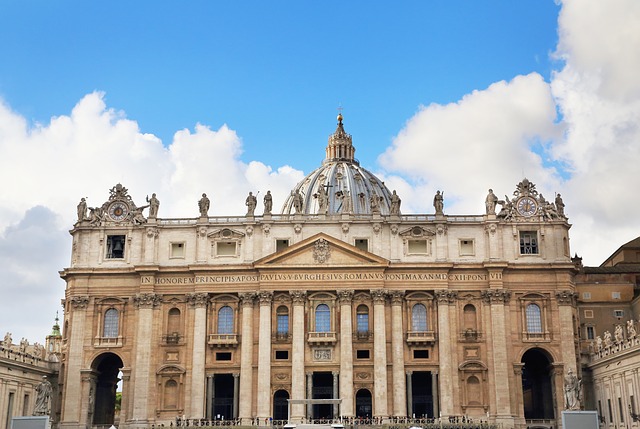The Roman Catholic Church stands as one of the most venerable institutions in the world, a repository of tradition and tenets that have significantly shaped the course of Western civilization. Its history is intricate, marred by political intrigue, spiritual aspirations, and cultural revolutions. The papacy, in particular, emerged as a crucial power player in both spiritual and secular domains. These dynamics deserve careful exploration, not solely from a historical viewpoint but also through the prism of Christian understanding.
To grasp the allure of the Roman Catholic Church, one might first consider its origins. The Church traces its roots to Christ and the apostles, with St. Peter often being heralded as the inaugural pope. This foundation grants it a profound sense of legitimacy, heavily intertwined with the belief that the papal office carries a divine mandate. Early on, the Church found itself enmeshed in the sociopolitical fabric of the Roman Empire, leveraging its growing influence to advocate for Christian values amidst imperial decrees and cultural upheaval.
The era of Constantine the Great marked a significant turning point. His Edict of Milan in 313 AD legalized Christianity, allowing the faith to flourish openly for the first time. The Church transitioned from a persecuted community to a favored institution, now needing to navigate the complexities of power. This transformation laid the groundwork for the papacy’s ascendency, as bishops of Rome began to assert their authority not only over ecclesiastical matters but also in political governance. The intertwining of church and state during this period raises essential questions about the ethical implications of such power dynamics.
As centuries unfolded, popes took on various roles, often resembling monarchs. The Papal States were established, creating a geographic and political entity under papal rule. The popes became landowners and rulers, involved in wars and diplomacy. While this enhancement of authority solidified their ecclesiastical dominance, it also led to controversies. The infamous sale of indulgences in the late Middle Ages incited widespread discontent and eventually catalyzed the Protestant Reformation. This moment in history not only highlighted the potential for corruption within the Church but also illuminated the spiritual hunger of believers seeking authentic faith untainted by avarice.
The Reformation represented a seismic shift in Christianity, prompting critical reflection on the very nature of authority, scripture, and the laity’s role in salvation. While Martin Luther and other reformers were denouncing papal excesses, the Roman Catholic Church was not passive. The Council of Trent (1545-1563) was convened to address these issues, reaffirming the Church’s teachings and establishing measures to curb abuses. In this period, the Church found itself at a crossroads, striving to reestablish its moral and spiritual credibility. The Counter-Reformation underscored an intrinsic tenet of Christianity: the continual quest for renewal and adherence to doctrinal purity.
As the modern age approached, the Church faced new challenges. The Enlightenment, with its emphasis on reason and individualism, cast a shadow over tradition-bound institutions. The papacy, thus, had to grapple with the evolving landscape of human thought. Some popes responded by emphasizing social justice and the Church’s role in addressing societal issues—a move towards modernizing its mission, consistent with the Gospel’s call to serve the marginalized.
The 19th and 20th centuries brought about seismic sociopolitical upheaval. The rise of secularism, along with the growth of nationalism and ideologies such as communism, posed existential threats to the Church’s influence. The First Vatican Council (1869-1870) and the declaration of papal infallibility were attempts to bolster the papacy’s authority amid skepticism. Yet, such declarations often elicited mixed reactions among the laity and theologians. The modern Christian perspective invites a conscientious examination of infallibility: how might a tradition rooted in fallible human experience reconcile itself with the aspiration for divine perfection?
World War II and the subsequent Cold War further solidified the Church’s need to reorient itself. Pope John XXIII’s call for the Second Vatican Council (1962-1965) heralded an era of significant transformation. This council sought to engage with the contemporary world, advocating for ecumenism and a renewed emphasis on the laity’s role within the Church. In this light, the Church embodies the duality of standing firm in foundational beliefs while simultaneously adapting to the needs of its people. This proclivity for transformation is indicative of a living tradition informed by, and responsive to, the spiritual yearnings of individuals.
In recent decades, the Roman Catholic Church has faced myriad challenges, including scandals that have threatened its credibility. These failures have prompted deep introspection and calls for accountability. The human dimension of the Church becomes glaringly evident in these crises—a stark reminder of the disparity between ideals and realities. Still, the resilient spirit of the faithful offers hope. The Church, in its essence, is a reflection of humanity itself: flawed, yet striving for a higher calling.
The complexity of the Roman Catholic Church’s history, entwined with the evolution of the papacy, unveils a fascinating narrative rife with power struggles and profound search for faith. This exploration reveals not only an institution navigating the vicissitudes of power but also a community of believers seeking meaning and purpose within its embrace. The relationship between the papacy and the people transforms into a microcosm of the larger Christian experience—the push and pull between authority and personal faith often serving as the canvas upon which the divine narrative unfolds. In essence, the Church’s history offers critical insight into the interplay of power, spirituality, and the ongoing quest for a faith that resonates deeply within the human heart.



